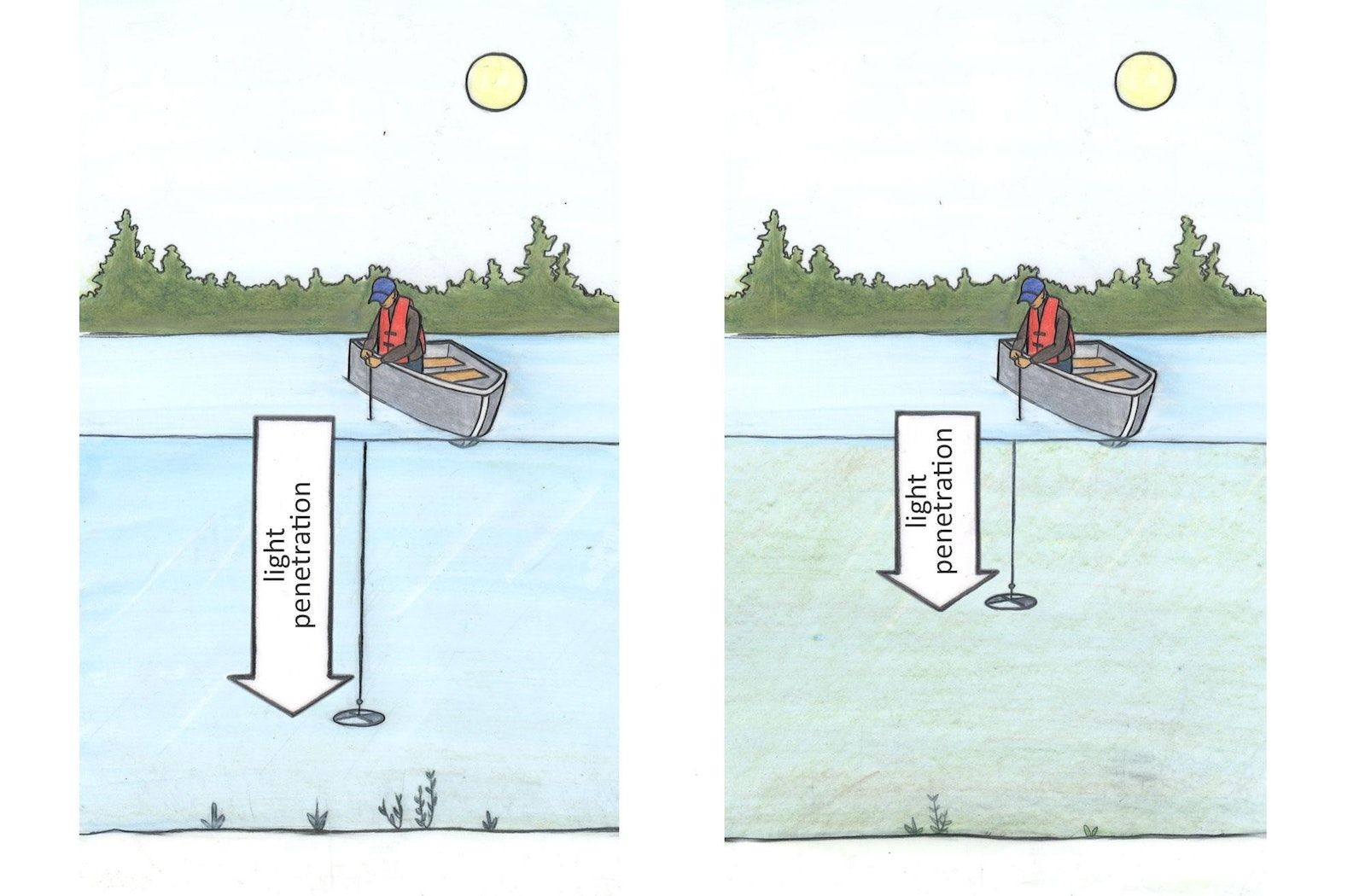What is it?
Secchi depth refers to the depth at which a disk lowered into the water can no longer be seen from the surface. Secchi depth is related to water clarity and is a measure of how deep light can penetrate into the water.
This depth can range from a few centimetres to several metres and is influenced by the amount of suspended solids (e.g., silt, algae) or if the water has a lot of colour (e.g., brown “tea-stained” water, common in boreal lakes).

Secchi disks are weighted and come in two common forms: a smaller black and white disk for use in freshwater and a larger all-white disk for use in the ocean or great lakes.
Why does it matter?
The availability of light underwater is important because algae and other aquatic plants need light for photosynthesis. Therefore, the productivity of a lake (how much plant and animal life it can support) is in part dependent on the clarity of the water.
Because water clarity is also affected by the amount of algae, Secchi depth can in turn be an indicator of lake productivity, especially if measurements are taken at times of the year when algae are most abundant.
How is it measured?
Secchi depth is measured as the depth at which the Secchi disk is no longer visible when lowered into water from the shaded side of a boat, and the point at which it reappears after raising it. Often a few Secchi depth measurements are made and the average is reported.

Secchi depth has been measured in lakes and oceans for over a hundred years. While there are other more technologically advanced ways to measure water clarity, Secchi depth is a standard, simple and inexpensive method, and is still in frequent use today.
Related to Secchi depth: turbidity.
Secchi depth is influenced by: chlorophyll, total suspended solids (TSS), water colour.